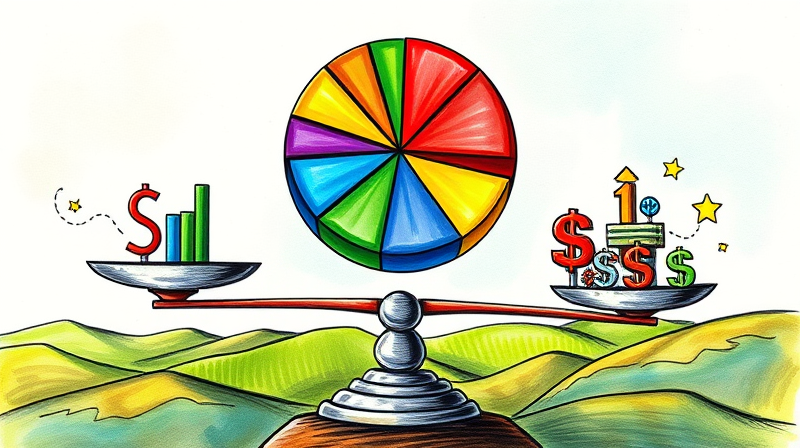
In today’s interconnected global economy, a single shock can ripple through markets, industries, and entire nations. As individual investors and institutions seek to build robust portfolios, the concept of diversification across sectors emerges as a cornerstone of risk management. By strategically allocating capital, one can not only protect personal wealth but also contribute to a more stable financial system.
Diversification is defined as spreading investments across various sectors to mitigate risk and reduce potential losses. It addresses two main types of risk:
1. Unsystematic Risk: This relates to company- or industry-specific events—such as a factory fire or regulatory fines—that can be largely eliminated through diversification.
2. Systematic Risk: Also known as market risk, it stems from broader economic, political, or global events—like recessions or geopolitical upheavals—that affect the entire market. While diversification cannot eliminate systematic risk completely, it can significantly reduce its impact when done thoughtfully across different sectors and regions.
By avoiding concentration in a single industry, investors effectively limit the risk that a shock to one sector will cascade through their entire portfolio. Empirical evidence demonstrates that as the number of stocks across distinct industries increases, portfolio volatility decreases dramatically:
This table highlights the diminishing marginal benefits of diversification—most gains are realized by owning 20–30 stocks from different sectors, as established by Evans and Archer (1968).
Insurance firms provide another compelling case. Companies that allocate roughly equal capital to life and non-life lines reduce their contribution to systemic risk more effectively than monoline insurers, demonstrating how balanced exposure across industry lines fosters resilience.
A foundational step is to include exposure to the 11 primary sectors represented in broad market indices like the S&P 500. Investors can achieve this through individual stocks or broad-based ETFs and mutual funds:
Beyond sector lines, global diversification broadens your safety net. Economic downturns are often localized; by investing across geographies, you reduce the chance that a regional crisis overwhelms your entire portfolio.
While diversification eliminates unsystematic risk, systematic risk persists. To shield against market-wide turmoil, investors can integrate sophisticated tools:
By choosing to layer sector diversification with hedging, portfolios can withstand abrupt market shifts and prolonged downturns more effectively.
Even with a diversified strategy, investors may inadvertently elevate systemic exposure through correlated positions:
To avoid the pitfalls of home bias, regularly review allocations and seek assets with varied risk drivers.
Forward-looking investors factor in climate and regulatory risks by integrating green bonds, ESG-focused funds, and impact investments. These assets not only align with sustainability goals but also provide diversification benefits, as they often behave differently from traditional equities and bonds.
As global policies shift toward decarbonization, portfolios emphasizing climate resilience can capitalize on emerging opportunities while mitigating losses from stranded assets.
The 2008 Asset-Backed Securities crisis offers a stark reminder of the dangers of concentrated exposures. Major institutions holding overlapping ABS portfolios experienced rapid contagion and liquidity shortages, ultimately requiring systemic bailouts.
Conversely, diversified insurance firms that balanced life and non-life lines demonstrated greater stability, lowering their systemic footprint and benefiting policyholders in times of stress.
Sector diversification is more than a risk-reduction technique for individual investors—it forms the backbone of a robust financial ecosystem. By thoughtfully allocating capital across industries, regions, and asset classes, we not only protect our own portfolios but also contribute to the health of global markets.
In an era of unprecedented uncertainty—ranging from geopolitical tensions to climate change—embracing diversification as a dynamic, ongoing process ensures that we are better prepared for whatever the future holds. Start today by reviewing your sector allocations, exploring new geographies, and integrating advanced risk controls to build a portfolio that stands the test of time.
References













